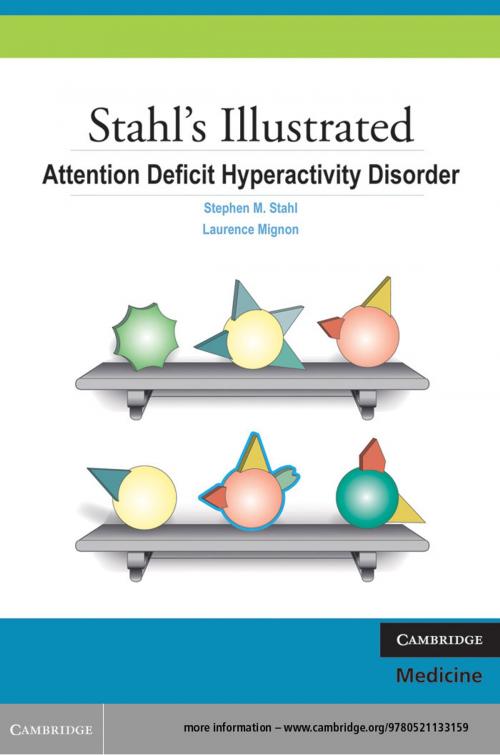Stahl's Illustrated Attention Deficit Hyperactivity Disorder
Nonfiction, Health & Well Being, Medical, Specialties, Psychiatry, Ailments & Diseases, Mental Health| Author: | Stephen M. Stahl, Laurence Mignon | ISBN: | 9781139833370 |
| Publisher: | Cambridge University Press | Publication: | August 24, 2009 |
| Imprint: | Cambridge University Press | Language: | English |
| Author: | Stephen M. Stahl, Laurence Mignon |
| ISBN: | 9781139833370 |
| Publisher: | Cambridge University Press |
| Publication: | August 24, 2009 |
| Imprint: | Cambridge University Press |
| Language: | English |
As with Stahl's Essential Psychopharmacology, 3rd edition and The Prescriber's Guide, Attention Deficit Hyperactivity Disorder is a heavily illustrated title with a fun approach to theories. Stahl has been at the heart of significant advances in the treatment of ADHD in the past ten years, as new psychopharmacologic medications and cognitive and behavioral therapy techniques have been introduced into practice. The visual learner will find that these books make psychopharmacology concepts easy to master, while the non-visual learner will enjoy a shortened text version of complex psychopharmacology concepts. Novices to the series will find that the well-structured graphics and visual vocabulary can help build a vivid conception of complex pharmacologies. The complementary tables and algorithms provide clinical strategies and tips for drug dosaging, and the Suggested Reading section at the end of each book is an invaluable tool to guide the reader to more in-depth learning on particular concepts.
As with Stahl's Essential Psychopharmacology, 3rd edition and The Prescriber's Guide, Attention Deficit Hyperactivity Disorder is a heavily illustrated title with a fun approach to theories. Stahl has been at the heart of significant advances in the treatment of ADHD in the past ten years, as new psychopharmacologic medications and cognitive and behavioral therapy techniques have been introduced into practice. The visual learner will find that these books make psychopharmacology concepts easy to master, while the non-visual learner will enjoy a shortened text version of complex psychopharmacology concepts. Novices to the series will find that the well-structured graphics and visual vocabulary can help build a vivid conception of complex pharmacologies. The complementary tables and algorithms provide clinical strategies and tips for drug dosaging, and the Suggested Reading section at the end of each book is an invaluable tool to guide the reader to more in-depth learning on particular concepts.















